A Deep Dive into the Berserk Anime Dub Experience
Intro
Berserk is not just another entry in the anime pantheon—it's a monumental piece of storytelling that has captured the hearts of fans around the globe. Known for its dark themes, complex characters, and philosophically rich narrative, the Berserk anime has had a tumultuous journey through various adaptations. While the original manga by Kentaro Miura laid the foundation, the anime dub has played a vital role in shaping how audiences perceive this iconic story.
In this article, we delve into the dubs of Berserk—exploring their production history, casting, and cultural impact. The way characters are voiced can make or break an anime's emotional resonance. Thus, the choice of actors and the style of their delivery is paramount. With the legacy of Berserk, the importance of its dub can’t be overstated; it’s more than mere words echoing through the ether—it’s a bridge connecting the artistry of Japan with an international audience.
From discussing viewer reactions to examining voice acting nuances, we want to expose the depth and layering found in the Berserk dubs. Anime enthusiasts will find insights into production decisions as well as a detailed dissection of how these aspects create a unique viewing experience. Along the way, we’ll touch on how the dub impacts the understanding of character arcs and thematic depth.
Episode Reviews
While discussing the Berserk dub, it's essential to dive into specific episodes and remember that each adaptation has brought something different to the table. Let’s tackle some of the significant dubs and their episode highlights, as each framing brings out nuances that might otherwise go unnoticed.
Summary of the episode
Take for instance the iconic episode "The Golden Age" arc, rich with both narrative and visual appeal. Betrayal and camaraderie battle for prominence as Griffith's ambition intertwines with Guts' reluctant loyalty. The tension is palpable through the voice work, and the English dub does an exceptional job conveying the emotional stakes at play.
Analysis of key events
Key events, such as the Eclipse, pivotally hinge on vocal delivery. The contrast between light and dark, hope and despair, is voiced in a manner that layers complexity onto the characters. The English dub provides a different rhythm and cadence, one that offers western viewers a powerful parallel to the original Japanese intent yet infuses it with individual character—especially in moments that test character resolve.
Discussion on character development
Character arcs within the episode are painted vividly through voice acting. Guts' struggle transforms from a solitary warrior to a more dynamic figure, brought to life through a skillful mix of aggression and vulnerability in the dub performance. Conversely, Griffith's role teeters on the edge of charismatic leadership and manipulative ambition, providing ample material for analysis from a dub perspective.
Highlight memorable moments
Memorable moments sizzle with intensity, none more so than the combat scenes where every clang of steel is matched with superb vocal prowess. It’s in these moments of battle that each dub shines uniquely; the Western audience sometimes finds itself more caught up in the grit of voice acting than the visuals—a testament to how impactful the right voice can be.
"The voice guides the viewer's emotions. The right tone can elevate a moment from good to unforgettable."
As we further unravel the elements that make the Berserk dub shine, we will continue exploring character spotlights that dig deeply into what drives these multifaceted individuals, both in the storyline and within the broader cultural landscape.
Historical Context of Berserk
Understanding the historical context of Berserk is crucial to appreciating its depth, complexity, and lasting influence on anime and manga culture. The origins and creation of this iconic series lay the groundwork that informs its themes, characters, and the very essence of its storytelling. Moreover, recognizing the influence the original manga had on later adaptations provides insight into how the material has evolved over the years. This foundation is paramount, particularly when examining the dubbed versions, as context often dictates the choices made in voice casting and cultural adaptation.
Origin and Creation
Berserk was created by Kentaro Miura, first serialized in 1989. This seminal work began its life in Young Animal, a magazine that specialized in manga targeting young adult audiences. The story follows Guts, a lone mercenary, as he navigates a dark, twisted world filled with demons and betrayal. Miura’s unique blend of grim storytelling, complex characters, and intricate artwork set Berserk apart from its contemporaries.
During its inception, Berserk was not simply another sword-and-sorcery tale; it interwove themes of fate, free will, and the human condition. Miura’s dedication to crafting a richly detailed narrative was evident, as he meticulously developed the world around Guts, from the traumatic events of his childhood to the philosophical battles he faces later in life.
As Miura worked on the manga, it started to gather a cult following. Its raw violence and moral ambiguity stood in stark contrast to the more typical heroic tales that dominated the era. This resonance with readers laid the groundwork for the intense fanbase that would grow around the series and later, its adaptations.
Manga Influence
The Berserk manga didn’t just create a huge fan following; it influenced numerous artists and writers in the anime and manga realms. The series challenged conventions through its sophisticated themes and character arcs that delved into psychological and moral dilemmas.
This unique approach can be seen echoed in later works, inspiring productions like Attack on Titan and Vinland Saga. Just like Guts, these protagonists grapple with personal demons and existential questions, demonstrating how Miura's storytelling prowess left an indelible mark on the industry.
Many anime enthusiasts often credit Miura’s expertise with the pen and ink as a source of inspiration. His striking ability to create awe-inspiring battle sequences paired with emotional depth serves as a benchmark for subsequent creators. Readers learned that the allure of a story lies in its willingness to confront dark themes rather than shy away from them.
Early Anime Adaptations
The first anime adaptation of Berserk aired in 1997, produced by OLM, Inc. This series covered the initial arcs of the manga but faced challenges in capturing the nuance of Miura’s work. While it successfully brought characters like Guts and Griffith to life, the adaptation was often criticized for its pacing and lack of detail, primarily due to the constraints of television.
In the subsequent years, the original anime, while beloved for introducing Berserk to a broader audience, was often seen as a stepping stone rather than a complete adaptation. Later, new adaptations emerged, such as the 2016 reboot, which attempted to capture later arcs from the saga but stumbled with its use of CGI animation, which didn’t resonate well with all fans.
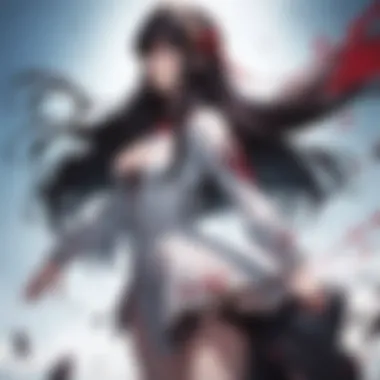
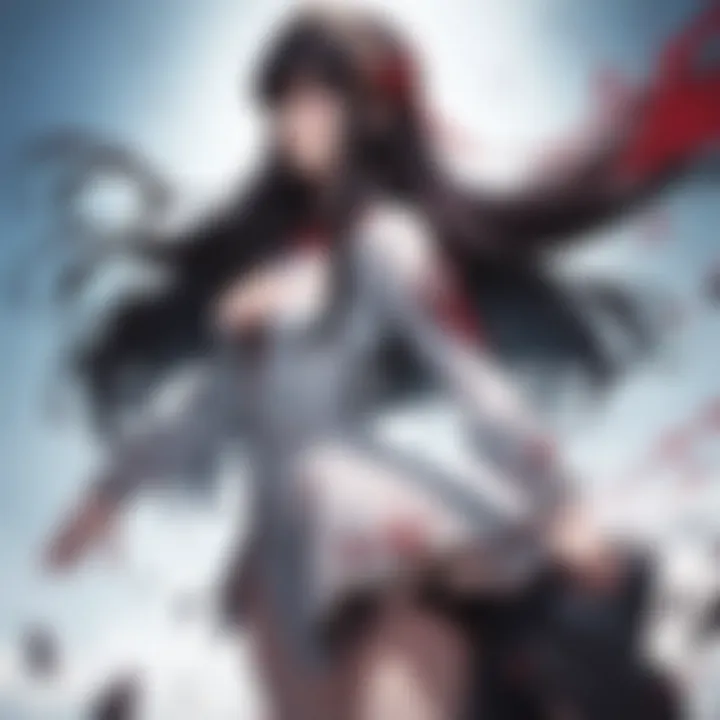
"Every adaptation of Berserk is a reminder that the original manga remains an unmatched testament to the complexity of human experience."
As adaptations continued to surface, discussions around the differences between subbed and dubbed versions became prominent. On one hand, the need for great voice acting arose, and on the other, the essence of the original was debated extensively. This evolution in adaptations sets the stage for a deeper look into the dubbed versions of Berserk, paving the way for richer discussions on voice casting and cultural impact.
Understanding the Dubbed Versions
The intricacies of dubbing in anime can be overlooked by many, yet it plays an indispensable role in how a series resonates with global audiences. For Berserk, a show steeped in dark themes and complex characters, the dubbing process has become a cornerstone of its accessibility. This section aims to shed light on why understanding dubbed versions is crucial, particularly for anime enthusiasts eager to grasp the full tapestry of Berserk.
Dubbing is not merely a replacement of one language for another; it is a re-interpretation that allows a narrative to reach people across different cultures. The subtleties embedded within dialogues can carry meanings that are often lost in translation. Therefore, by exploring the nuances involved in dubbing Berserk, we can appreciate how it maintains the essence of the original while making it palatable for a wider audience.
Purpose of Dubbing
Dubbing serves multiple purposes that extend beyond mere conversion of spoken words:
- Accessibility: One of the primary aims of dubbing is to make shows like Berserk accessible to those who might find it challenging to read subtitles while following action-packed sequences. This is particularly relatable for viewers who prefer an immersive experience without dividing their attention.
- Cultural Relevance: Dubbing can modify cultural references in dialogues, allowing local audiences to relate better. For instance, certain idioms or puns may not resonate in their original form; thus, adapting these expressions ensures the humor or dramatic weight remains intact.
- Character Representation: A good dub can breathe life into characters, shaping their personalities through vocal inflections and emotional ranges that align with a viewer's expectations. Kirito’s bravado in another anime could be toned down or heightened based on the voice actor's interpretation, for example.
Ultimately, dubbing seeks to create not just a translation but an adaptation that maintains the heart of the series. In Berserk’s case, where themes of struggle and resilience dominate, voice acting becomes a vehicle* for these messages to resonate.
Differences Between Subbed and Dubbed
Understanding the contrasts between subbed and dubbed versions reveals the diverse experiences they offer:
- Artistic Choice: The original Japanese version often places a heavy emphasis on certain vocal performances that may differ in a dubbed version. This difference can lead to varying interpretations of character arcs and emotional beats.
- Pacing and Timing: Dubbed versions face a challenge of fitting English dialogue into mouth movements that were crafted for Japanese. This can create a change in pacing. Certain scenes in Berserk may feel more hurried or drawn out depending on how well the timing has been managed in the dub.
- Soundtrack Engagement: The original soundtrack may change or feel different in dubbed versions. Sometimes, dubs will alter music to suit the local audience better or to adjust the overall tone.
The choice between subbed and dubbed versions of Berserk often comes down to personal preference. Both offer distinctively rich experiences that amplify the allure of this iconic series, each in its unique manner.
"In the end, it is the story that weaves its way through all adaptations. Whether read or heard, Berserk continues to grip the hearts of its audience."
As fans dive into the world of Berserk, understanding these facets of dubbing can enhance their appreciation and ultimately shape their personal connections with the series.
Voice Casting Decisions
The voice casting decisions for the Berserk anime dub are a significant aspect that can’t be brushed aside. The characters in Berserk are deeply layered, and their personalities must come alive through the voices chosen to portray them. A well-suited voice can enhance character perception, allowing the audience to better connect with their nuances. The casting process seeks to find voices that resonate with the spirit of the characters while ensuring that they fit seamlessly into the series' grim and intense atmosphere.
Key Voice Actors
In considering the impact of the Berserk dub, one can’t overlook the contributions of key voice actors like Doug Erholtz, who brought Guts to life. His gravelly yet dynamic voice captures both Guts’s raw power and underlying vulnerabilities. Similarly, Matthew Mercer’s performance as Guts in the newer adaptations has been praised for its emotional depth and authenticity. Each actor brings their unique flair, and this variety further enriches the dub, providing dedicated fans with a range of experiences when they watch different versions.
- Voice Actors in Berserk:
- Doug Erholtz (Guts)
- Matthew Mercer (Guts)
- Carrie Keranen (Farnese)
- Keith Silverstein (Griffith)
These actors are more than just voices; they embody the characters, allowing the audience to lose themselves in the story. The nuances they add often vary from adaptation to adaptation, creating an evolving tapestry of performances that celebrate the series’ complexity.
Audition Process
The audition process for voice actors in the Berserk dub is both rigorous and revealing. It starts with a breakdown of characters, where casting directors look for specific qualities that match the personality traits of each character. Sometimes, directors might even hold open auditions, allowing a broader pool of talent to showcase their skills.
During auditions, actors need to display not just their vocal talent but also their ability to convey emotion. This stage is crucial; if an actor can channel the character’s psyche effectively, they stand a good chance of landing the role. Beyond talent, considerations like previous work, versatility, and chemistry with other cast members also play essential roles.
Voice Acting Techniques
Voice acting in Berserk is an art that requires an array of techniques. Actors often rely on methods like emotional recall and sense memory to connect authentically with their characters. For instance, to effectively portray Guts’s rage and anguish, actors might tap into personal experiences of struggle or loss, embellishing the performance with genuine emotions that resonate with the audience.
- Key Techniques Include:
- Emotional Recall
- Sense Memory
- Vocal Modulation
- Characterization Techniques
Additionally, vocal modulation is a significant aspect—how an actor can shift pitch or tone drastically impacts the scene’s weight. Some scenes demand a fierce roar, while others call for a soft whisper. Proficient use of these techniques can elevate a performance from mundane to downright haunting.
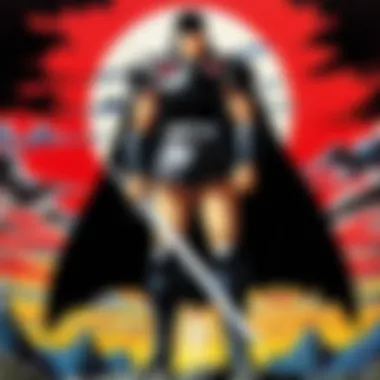
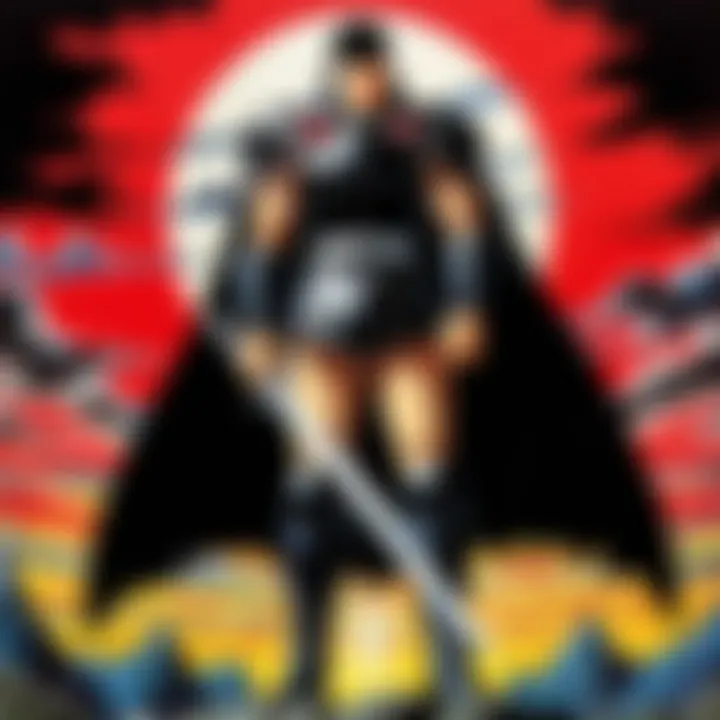
"Voice acting isn't just about reading lines; it's about understanding the character and embodying them in an audible form."
In summation, the intricate dance of voice casting decisions, the authenticity of performances by key actors, the exhaustive audition process, and the expert techniques utilized come together to create a robust dub. This makes the Berserk experience compelling for veterans and newcomers alike, keeping the series alive and relevant in a crowded landscape of anime.
Cultural Adaptation in Dubbing
When discussing Berserk and its various dubs, an important topic that arises is cultural adaptation in dubbing. This element is crucial in ensuring that the anime resonates with different audiences by translating not just the words, but the sentiments and situational nuances of each dialogue. It’s a multifaceted effort involving language, societal context, traditions, and humor. Each culture has its way of interpreting expressions and situations; hence, it becomes essential for voice actors and directors to bridge gaps where understanding might falter.
The need for this adaptation stems from the fact that Berserk, while grounded in rich fantasy, contains cultural references and themes that might not translate cleanly across borders. Someone translating the series must consider elements that are either too foreign or potentially confusing to the target audience.
Localizing Dialogues
Localizing dialogues in a dub involves transforming the original script so that it feels organic in the new language. This requires a deep understanding of both the source and target languages, creating a balance between maintaining the original character's voice and making the dialogue feel natural in translation.
For instance, Guts' fierce demeanor often contains phrases that express his resilience and drive. A direct word-for-word translation might miss the intensity behind his character. Hence, a localizer might opt for more colloquial expressions that resonate with viewers, ensuring the emotional weight remains intact. An example could be changing a phrase about sacrifice into one reflecting a more familiar expression of fighting against all odds.
Cultural Sensitivity
Cultural sensitivity plays a big role in how the audience interacts with dubbed content. Understanding cultural contexts, historical references, and even humor can dramatically shift audience response. When dubbing Berserk, any humor or cultural references that are deeply embedded in Japanese culture may need a thoughtful reinterpretation.
Take, for example, references that touch on folklore or mythology. A character mentioning an aspect of Japanese tradition may need a substitute that provides a comparable emotional or narrative weight related to the audience’s context. The key here is to ensure that adaptations respect the source material while also acknowledging the backgrounds of the new viewers.
"Cultural adaptation ensures that the essence of the original content is preserved while making it accessible and relatable to diverse audiences."
In the end, the work of localization and cultural sensitivity in dubbing extends the reach of Berserk far beyond Japan, enabling more viewers to engage with its themes while appreciating the intricacies of its storytelling.
Integrating thoughtful and culturally-aware adaptations not only enhances viewers' enjoyment but also strengthens the series' global community, fostering connections among fans from different backgrounds.
Technical Aspects of Dubbing
Dubbing a complex anime like Berserk requires not just talented voice actors but also a well-honed technical foundation. Technical aspects of dubbing include various elements like audio engineering and soundtrack integration, which play a critical role in how the final product resonates with viewers. By examining these facets, we understand better the subtleties that make or break the viewer's experience.
Audio Engineering in Dubbing
The backbone of any dubbing project lies in its audio engineering. This encompasses everything from sound capture to the final mix. Good audio engineering ensures the dialogue is clear, the emotional tones are palpable, and the audio blends well with the visuals.
One important factor is the recording environment. Voice actors often record in sound booths, which are soundproofed to eliminate background noise. This isolation allows the actors to deliver their lines with vocal intensity without interruptions. However, the environment isn't just about acoustics; lighting and comfort also affect performances. If an actor feels at ease, their voice tends to reflect that ease.
Next comes the mixing process. Here, sound engineers balance the levels of the dialogue, sound effects, and background music. For Berserk, this is crucial because the anime's atmosphere varies dramatically. It ranges from somber and reflective to action-packed and intense, and audio mix must reflect those shifts seamlessly. Involving dynamic range in engineering contributes to how immersively the story is told. Thus, if a character shouts in anger during a climactic battle, it doesn't just sound louder; its emotional weight deepens the impact on viewers as well.
Soundtrack Integration
Soundtrack integration is another pivotal element of dubbing. The music in an anime like Berserk does not merely serve as background noise; it complements the narrative and elevates emotional peaks. The task of integrating these musical pieces into the dubbed version necessitates a deep understanding of both the original score and the flow of the dialogue.
Choosing the right moments for music to swell or fade can change the tone instantly. For instance, in a tense scene involving Guts and Griffith, the score's rise can accentuate the stakes and underscore the characters' emotions. It's not just about slapping music behind a scene; it requires careful timing and emotional precision.
In this regard, multiple soundtrack versions may exist for different adaptations. This could lead to variations between the Japanese original and the English dub. Yet, the aim remains the same: to enhance storytelling. The audience is drawn into the universe when the music does its job well, building upon the established motifs and themes, becoming part of the world of Berserk rather than just an afterthought.
The right technical approach in audio can provide a window into the heartfelt struggles of characters, turning a good show into a memorable experience.
Understanding these technical aspects of dubbing enriches our appreciation for Berserk. They reveal how much effort goes beyond just voice acting, showcasing the nuanced craftsmanship needed to create an evocative anime experience.
Fan Reception and Critique
Exploring fan reception and critique forms a crucial part of understanding the impact and legacy of Berserk's anime dub. This section sheds light on the profound ways in which audience reactions shape perceptions, provide feedback, and influence future productions. The way fans respond to a dub can often tell a deeper story about their investment in the material, whether it's their emotional ties or the importance of maintaining the original vision of the narrative.
Comparative Analysis with the Original
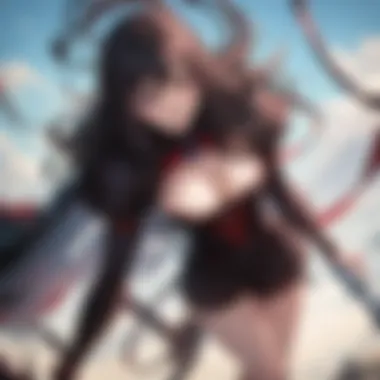
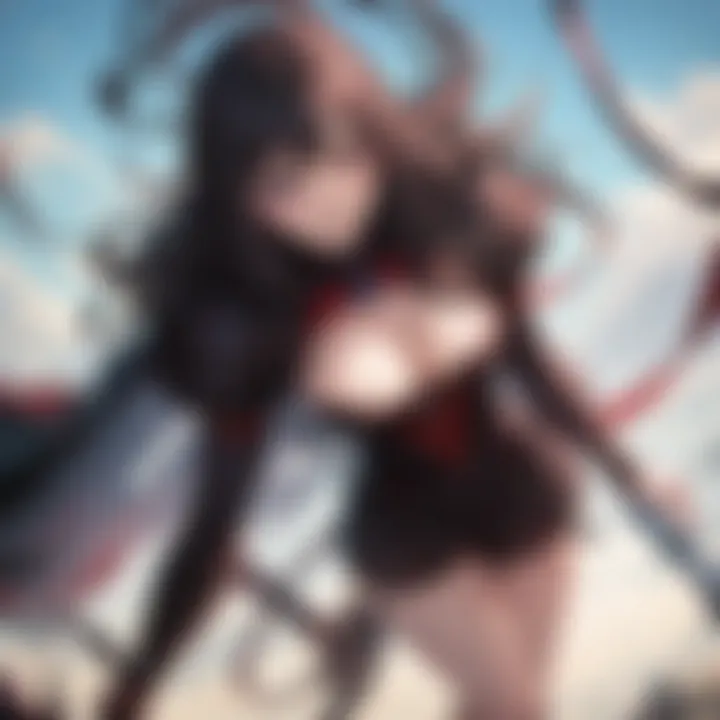
The discussion surrounding the comparative analysis of the dubbed version with the original remains a lively topic among fans. While die-hard readers of the Berserk manga may have their own expectations, the adaptation often prompts a kind of scrutiny that can lead to vibrant discussions.
In the original Japanese version, subtleties in voice acting and cultural context often resonate more profoundly with local audiences. For instance, the way Griffith's character is portrayed in Japanese can carry tones of charisma and cruelty that localizations sometimes struggle to replicate. The choices made by the English voice actors may not always align perfectly with what fans perceive as "true" to the original depiction. Some viewers feel this disparity diminishes the overall experience, while others argue that it allows a new interpretation, making the story accessible to a broader audience.
To illustrate, when comparing pivotal scenes, such as Guts' iconic battles, the reactions in the dubbed version can lack the raw intensity found in the original. For many, Guts is not just a warrior; he embodies the pain and grit of his struggles, which sometimes doesn’t translate well outside of its native tongue. And then there's the dialogue; nuanced phrases and idiomatic expressions often face hurdles in translation.
"Dubbing is like trying to fit a square peg in a round hole; sometimes it just doesn't translate smoothly," explains a committed fan on reddit.com discussing Berserk's adaptations.
This proves a double-edged sword, where fans both appreciate the new opportunities for engagement and lament departures from the source material, leading to a mixed bag of reactions.
Impact of Dubbing on Character Perception
The impact of dubbing on character perception dives into how voice acting brings characters to life differently based on audience familiarity and cultural context. For Berserk, strong characterization is essential, as the series thrives on complex emotional storytelling.
The portrayals can swing the emotional weight from character to character. For example, Guts' fearsome demeanor and tragic backstory demand a powerful performance that resonates with viewers. However, if the dub fails to capitalize on that intensity, it can create a perception that diverges from the initial intent. Fans sometimes find themselves at a crossroads between appreciating the effort of a new voice cast and a sense of loss over what they feel has been misrepresented.
Some characters, like Casca, may come across with different levels of depth, depending on the choices made in voice direction and delivery. The way her vulnerabilities play out in the English dub can drastically alter how viewers perceive her role in Guts' journey and the Berserk universe at large. This dialectical relationship between voice work and audience understanding highlights the critical balance that must be struck in adapting such intricate stories.
Fans often report that a well-received dub can bolster the impact of scenes, making emotional beats more resonant. This suggests that dubbing, at its best, can enhance narrative engagement, but even so, failing to meet expectations can lead to a decline in emotional connections.
In summary, fans hold significant sway over the perception of Berserk's anime dub, and thus, their critiques are not merely opinions, but rather vital feedback that contributes to the ongoing evolution of dubbing within the anime landscape. Understanding these spaces of reception allows us to appreciate both the artistry of dubbing and the passion of the fan base.
The Evolution of the Berserk Dub
The evolution of the Berserk dub is a vital thread woven into its rich tapestry of narrative and character development. This exploration assists in uncovering how changes in production techniques, cultural context, and audience expectations have influenced the way this iconic series is presented to the world. From the initial adaptations to more modern interpretations, each phase reveals insights into not just the series itself but also the broader anime landscape.
Changes Over Time
The trajectory of the Berserk dub has been anything but linear. Each iteration brings forward new interpretations that both reflect and shift cultural perspectives. The early 1990s dub carried a rawness, a certain grit, aligning with the manga's dark themes, yet it lacked the finesse that would later define anime voice acting. Watchers of this version might remember the stilted dialogues or mismatched tones, which, while authentic at the time, gradually fell short against evolving standards.
As technology improved and audience tastes became more refined, subsequent adaptations, particularly in the 2010s, demonstrated marked enhancements in production quality. This period saw the rise of advanced sound engineering, meaning that not only were the voice actors selected based on their ability to deliver powerful lines, but their recordings were also manipulated for better acoustics, leading to a more immersive experience.
Notable Adaptations
Over the years, several notable adaptations of the Berserk dub have risen to prominence, each carving a place in the hearts of fans.
- 1997 Anime: This adaptation featured a cast that resonated with the audience, despite its limitations. Its distinct style set the stage for future dubs, even if some critics felt the emotional depth was not fully captured.
- Berserk: Golden Age Arc Movies: Released from 2012 to 2013, these films took a different approach by reimagining characters and storylines. The change in voice actors brought new life to the series, allowing for fresh perspectives. Some fans applauded the new direction, while others felt nostalgia for the original voices.
- Berserk (2016 series): This adaptation faced mixed reviews, often scrutinized for its animation style and lack of consistency. The dub, however, attempted to honor legacy while trying to reach out to a new generation of viewers. Fans had varied opinions on whether the adaptations did justice to the original manga.
"While adapting an iconic series like Berserk, the expectations often weigh heavy on the production team, as every element holds significance for long-time fans."
Each adaptation of Berserk highlights a unique aspect of its history and engagement with audiences. Analyzing these changes helps to appreciate how the series has maneuvered through shifting societal norms and technological advances, making it a compelling study in both anime and voice acting. Through this evolutionary lens, it becomes clear that the Berserk dub is more than mere localization; it is a narrative tether that connects audiences to the nuanced maze of storytelling within the anime realm.
Berserk's Crossover into Popular Culture
A series like Berserk doesn’t just quietly sit in the shadows of anime history. Instead, it barges onto the scene with all the fervor of a raging battle. Its crossover into popular culture is not just a footnote; it’s a whole chapter. The allure of Berserk extends far beyond the pages of its manga or the frames of its anime adaptations. It’s resonated in video games, films, and even music, blending its gothic themes and complex characters into various mediums, revolutionizing the way dark fantasy narratives are perceived and consumed.
References in Other Media
Berserk has found a way to seep into many forms of entertainment, showcasing its significance in contemporary culture. Here are some notable mentions:
- Video Games: The influence of Berserk can be felt in popular video games like Dark Souls and Bloodborne, both known for their gritty aesthetics and challenging gameplay mechanics. Many elements echo the struggle of Guts, the series' main character, against insurmountable odds. You can practically feel Guts’ fury and perseverance as you swipe at foes with a massive sword in those worlds.
- Film and TV: References can also pop up within certain films and television series. For example, the primeval struggle depicted in Berserk nods towards the dark themes found in shows like Game of Thrones, where morally grey characters and brutal realities shape the narrative arcs.
- Art and Fashion: Artists draw inspiration from Berserk, incorporating themes of melancholy and existential angst into their works. Even streetwear brands occasionally incorporate motifs from the franchise, appealing to a demographic that appreciates nuanced storytelling, augmented by stunning visuals.
- Music: Certain bands indicate their admiration for Berserk through both lyrics and album art. This overlap between music and anime enables a multi-sensory appreciation, extending Berserk’s reach.
To many, these references showcase how Berserk shakes hands with the greater cultural landscape, allowing the legacy of its themes to resonate with diversified audiences.
The Legacy of Berserk
Berserk stands as a titan in the realm of storytelling, leaving a legacy that reverberates in the veins of countless creators across the globe. Its ability to navigate through complex emotional landscapes is something that other works frequently aspire to mirror. Here’s why Berserk will be hard to shake off:
- Character Depth: Guts, Griffith, and Casca are not just characters; they embody the complexities of human nature, blending dark desires with untold struggles. This depth continuously invites new interpretations, keeping discussions alive.
- Thematic Resonance: Themes such as betrayal, ambition, and friendship resonate universally. The heart-filled narratives invite fans to connect not only with the story but also with themselves, allowing for personal reflection.
- Evolution of Dark Fantasy: Berserk set a high bar for dark fantasy. The intricate storytelling flooded with moral ambiguity helped pave the way for a genre that does not shy from exploring the shadows of human emotions.
The ripples of Berserk’s legacy reach into future generations of creators and fans alike, constantly reminding us of the power of storytelling. It highlights that sometimes, the deepest connections are forged in darkness, echoing amidst the battles we all fight.
"Some moments in storytelling don't grow dim with age; rather, they illuminate new paths for others to follow."
The very essence of Berserk serves as a powerful beacon, ensuring its place not only in anime circles but in the broader landscape of global pop culture.







